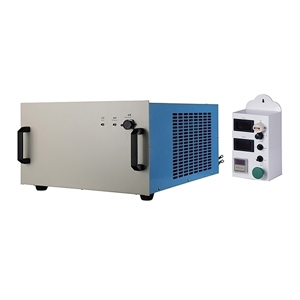Plating Rectifier Troubleshooting
Many of you are familiar with plating rectifiers. Through the electroplating rectifier, the AC power can be changed to DC power, which also shows the importance of the electroplating rectifier. We will encounter some failures in using the rectifier, and this article will introduce the 3-phase plating rectifier troubleshooting.

6 Troubleshooting of plating rectifier
The rectifier occurs an abnormally loud sound. This situation is mostly seen in the rectifier fan failure or more dust accumulation. This should be cleaned up in time, so as not to affect the normal operation of the whole machine.
The power indicator light of the rectifier is not on. In the electroplating rectifier equipment to facilitate the detection of a power failure set the power switch indicator, it exists to tell the power user whether the power supply has been properly energized. When it is normally energized, its normal light, then when it is no longer light, it is clear that the power supply power failure, the cause of the failure is none other than the following where point:
- The power cord is not plugged in, it may be that the power outlet is not solid, or the power cord has socket damage. This should be plugged firmly into the socket, connected to the power supply, and available electric pen to detect which is a problem.
- The rectifier switch is not closed, this may be because the staff forgot, to close the switch on the gate can be. There is also a three-phase power supply in the lack of phase will also cause the normal power supply of the plating rectifier, which should be timely inspected and maintained.
When the power indicator is normal, the fan is normal and the work indicator is not on, the work indicator is used to show whether the rectifier is working normally. When it does not light up and the power is normal, you should check whether the position of the start switch is correct, if the position is normal and still can not work, then please re-toggle the start switch once.
The working indicator is normal, but the adjustment of current and voltage can not be adjusted or can not be adjusted. Here we should explain that the adjustment of output voltage and current of the plating rectifier should be divided into two steps. The current is adjusted under the condition of voltage stabilization and the voltage is adjusted under the condition of current stabilization, when it can't be adjusted, you should pay attention to whether it is done according to the above two steps. If you find that the voltage and current cannot be adjusted, you should pay attention to whether the adjusted voltage and current have exceeded the minimum and maximum values that the power supply itself can carry and whether the adjustment switch has been rotated to the lowest or highest position.
In the process of work, the current output is suddenly interrupted, but the work indication and the voltage and ammeter display are normal. Generally because of the wiring problem between the power supply and the plating tank, then the wiring between the power supply and the tank should be checked, and then connected in time.
When the power output is suddenly interrupted and the protection indicator flashes during the working process. In this case, the power supply system generally enters the protection state. This time should be divided into the following situations.
- Overheating protection function, that is, the rectifier cooling.
- Fan or water cooling device problems, at this time you can check but the device, to exclude the fan and water cooling failure can basically restore normal use.
- The overcurrent protection function may be due to the power supply instantaneous output current being too large resulting in the rectifier into the overcurrent protection state, in this case just restarting the rectifier can be.
- Output voltage caused by overvoltage, under-voltage, phase loss protection, check whether the input is normal.

